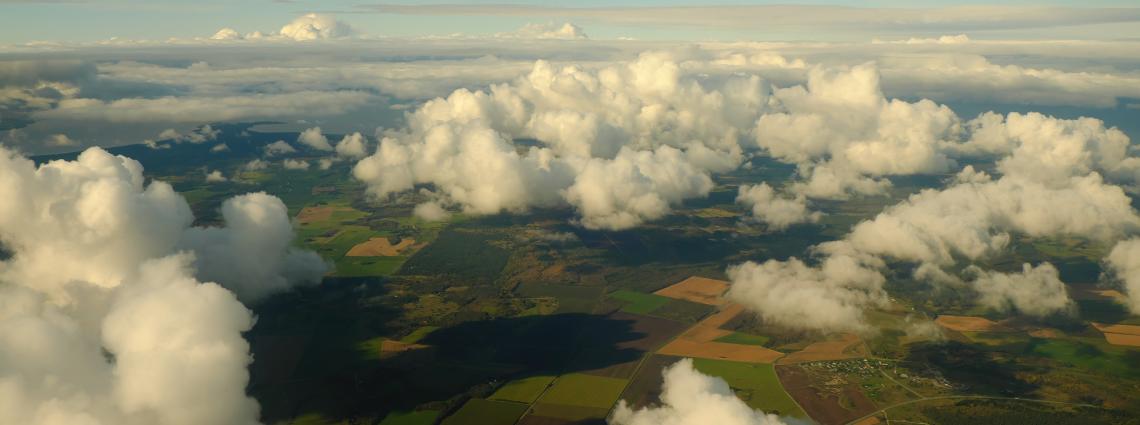Data Fusion and Atmospheric Transport Modelling (ATM)
Data fusion is a term used to describe the process of combining observations from the different monitoring networks that may originate from the same event. This includes correlating events that were located using waveform data with radionuclide observations.
For example, if an event that was recorded and located using data from the seismic network was indeed a nuclear explosion, this can only be confirmed by recording specific anthropogenic (produced by human activity) radionuclides at one or more of the radionuclide stations.
Since the radionuclide technology does not in itself provide any information on the probable location of an event, atmospheric transport modelling (ATM) provides a way to perform data fusion by data fusion by co-locating radionuclide detections with waveform events. It does this by backtracking the possible movement of radionuclides from the station where they were detected, or predicting their potential travel path from the known location of an event.
Based on high-quality global meteorological data and using ATM, it is possible to trace back the various three-dimensional travel paths of any selected radionuclide from any station where it was measured to the area where it may have originated. This process is called source region attribution. The aim is to obtain the best possible estimation for the source area, i.e. to identify a region as the release area that would best match the observations.
This backtracking method is most suitable when there is no advance knowledge of a possible release location. If it is known, however, the processing can be turned around. This means that ATM can provide forward calculations and predict where emitted radionuclides may be transported to, using meteorological data.
This technique proved its worth when the Democratic People’s Republic of Korea (DPRK) announced its first nuclear test in October 2006. The predicted results of the forward ATM calculations closely resembled the levels and timing of radioactive xenon detected at a radionuclide monitoring station in Canada.
Collaboration on meteorological data
The International Data Centre (IDC) performs daily atmospheric backtracking calculations for each of the IMS radionuclide stations with near-real-time meteorological data obtained from the European Centre for Medium-Range Weather Forecasts (ECMWF) and the National Centers for Environmental Prediction (NCEP) in the United States. Images generated from calculations based on ECMWF data are attached to each Reviewed Radionuclide Report.
Using software developed by the CTBTO, Member States can combine calculations from ECMWF and NCEP with radionuclide detection scenarios and nuclide-specific parameters to define regions in which sources of radionuclides may be located.
To corroborate the backtracking calculations, the CTBTO collaborates with the World Meteorological Organization (WMO) through a joint response system. This system enables the CTBTO to send requests for assistance in the case of suspicious radionuclide detections to 10 regional specialized meteorological centres or national meteorological centres of the WMO, located around the world, which aim to respond within 24 hours.
Combining waveform and radionuclide data
In the case of a partly contained nuclear explosion, several stations would possibly detect radioactive debris released into the atmosphere. With the benefit of ATM, a source area can be calculated, based on data from all these stations. This information is then overlaid with information from waveform data.
This is crucial for two reasons. First, the radionuclide analysis could provide conclusive evidence of the nuclear nature of an event identified by waveform data. Second, the event location information can be utilized to dramatically reduce the geographic region under scrutiny.
A software tool called WEB-GRAPE (web connected graphics engine) has been developed to help this overlaying process. It includes a graphic display defining the regions from which the radionuclide observations could have originated – the field of regard – superimposed on a map showing the seismic-acoustic events.
The results of all ATM computations are made available to Member States. Along with all relevant data, Member States have access to the WEB-GRAPE software, which enables them to generate their own customized ATM and data fusion results.
In case of events of special interest, Member States may request the IDC to undertake Special Studies or Expert Technical Analysis. The purpose of Special Studies is to provide in-depth, technical reviews of data from the International Monitoring System (IMS) to improve the estimated values for the standard signal and event parameters. The purpose of the Expert Technical Analysis of IMS data and other relevant data provided by the requesting Member State is to assist that state in identifying the source of specific events.
